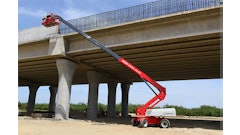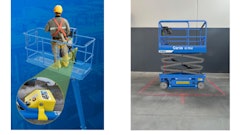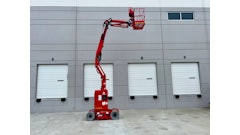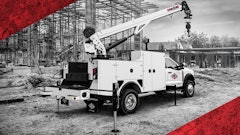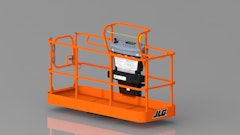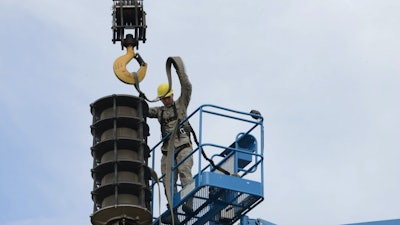
Boom lifts are an important component of the proper deployment and completion of many construction projects. However, given the size, scale, and structure of this type of equipment, they can also pose substantial risk and have the potential to cause serious injury if effective safety measures are not followed. These safety tips are important to consider and implement when operating boom lifts and can help prevent injuries, accidents, damage and liability concerns.
1. Keep a clear base and circumference
Always make sure that the base and the entire circumference of the boom lift are clear of any personnel while the boom lift is in use. The circumference of the lift is often significant and tools can easily fall from the platform and seriously hurt anyone who may be standing below. Keeping the entire area clear minimizes the risk of anyone being hit below by objects that may fall.
Though very rare, it is also possible for boom lifts to tip over. Keeping the area under and around the boom lift clear will help ensure that no one is hurt if the entire structure tips over.
2. Hire trained lift operators
Hiring employees who are properly trained to operate boom lifts and who maintain relevant safety certifications and knowledge, can help keep yourself and your other employees safe while the boom lift is in use. Testing potential new hires with hands-on assignments that demonstrate their operational knowledge of the lift can help detect potential problems and address them before any accidents happen on the actual job.
3. Wear your harness
A simple but vital safety measure is wearing a harness and ensuring the lanyard is fully secured to the bucket. While it may seem unlikely that an operator will fall out of the platform, even the slightest bump from another piece of equipment or object can throw operators off-balance and put them at risk of falling. Even a strong gust of wind could knock someone down or off of the platform and cause serious injury.
4. Don’t go over the weight limit
Each boom lift has a specific weight capacity. It is important to identify and adhere to these restrictions. Going over this limit, even slightly, could potentially make the lift top-heavy and cause it to tip over. One should always account for the weight of the operator on the lift as well as all tools and materials on the platform to ensure that the combined weight isn’t more than the recommended capacity before operating the lift. It’s also important to remember not to use the boom lift for lifting heavy supplies.
5. Don’t climb or sit on outer edges
When on the platform of a boom lift, it’s easy to be inclined to climb on the edge of the platform to reach something instead of moving the entire boom lift to reach it. However, this is more dangerous than many realize. Climbing or sitting on the edge of the platform significantly increases one’s chances of falling off the platform and can result in serious injury. If there is something that isn’t accessible, communicate with the boom lift operator to help get to a safe position in the platform where you can easily reach what is needed.
6. Avoid windy conditions
When a boom lift is extended very high, the wind can pose a substantial safety concern. If the wind is strong enough, it can knock a boom lift over completely. One should avoid using boom lifts in extremely windy conditions or in other adverse weather to avoid the risk of a boom lift potentially falling over. Each lift has a limit of how much wind it can withstand; reviewing the user manual will help an operator understand the specific restrictions of the lift they are operating and identify strategies for using the lift in challenging weather.
7. Operate on level ground
The height at which boom lifts can extend makes this equipment particularly vulnerable to tipping over. Ensuring the boom lift is being operated on even ground and on a stable base will help keep the operator and surrounding workers safe. Using the boom lift brakes correctly is one method that can be implemented to help stabilize the boom lift base.
8. Move the lift correctly
Properly reviewing the manufacturer’s manual will help an operator understand how to effectively maneuver the boom lift and when it is and isn’t safe to move the lift while it is extended. Although, as a best practice, it’s often best to avoid moving the lift in this manner. Moving a lift while extended creates opportunity for injury and should only be done when it is necessary and only if the manufacturer’s manual specifically condones it. Otherwise, one should lower the boom lift completely, move it and then extend where needed.
Operating boom lifts can pose challenges and risks, but following these safety tips will help prevent accidents and injury on-site.
Jim Arabia is a marketing and branding executive with over 20 years of experience leading business with growth initiatives. In his current role as Vice President of Marketing at BigRentz, the nation's largest rental network for construction equipment, Arabia leads market positioning strategies and creates programs to support the company's strategic vision. His previous experience includes award-winning brand marketing services for technology companies, real estate firms, and professional service firms. Arabia holds a B.A. from California State University, Fullerton and an M.B.A. from Pepperdine University.


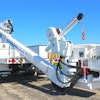

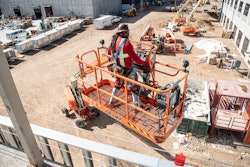
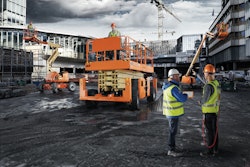







![Building Angled Sm Edit 6050b8d213f1b[1]](https://img.forconstructionpros.com/mindful/acbm/workspaces/default/uploads/2025/09/building-angled-sm-edit6050b8d213f1b1.Ygq5aAos3b.png?ar=16%3A9&auto=format%2Ccompress&crop=focalpoint&fit=crop&fp-x=0.53&fp-y=0.23&fp-z=2&h=135&q=70&w=240)
